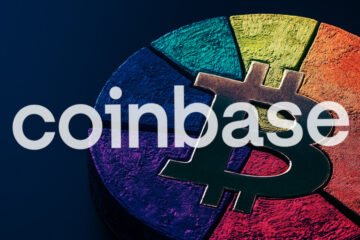
One hundred days after the Markets in Crypto-Assets (MiCA) framework took effect, most of the crypto industry is still racing to catch up.
On April 14, Circle’s executive Patrick Hansen, citing data from the European Securities and Markets Authority (ESMA), reported that only 11 stablecoin issuers and 15 crypto-asset service providers (CASPs) had received authorization.
The low figures underline the sector’s ongoing struggle to meet MiCA’s compliance requirements.
Hansen emphasized that without a MiCA license, crypto firms cannot passport their services across the 30 countries in the European Economic Area (EEA). This restriction is driving companies to accelerate their licensing efforts.
However, Hansen identified some key gaps, such as the fact that no asset-referenced token (ART) issuers have yet been authorized.
He also noted that regulators have received only about 25 white papers for digital assets that do not fall under EMT or ART classifications. This covers large-cap tokens such as Bitcoin and Ethereum.
As a sign of increasing enforcement, Italy’s financial authority, CONSOB, has added 15 names to its list of non-compliant entities, reflecting growing scrutiny under the new framework.
Licensed stablecoin issuers
Since MiCA took effect, 11 stablecoin issuers from six EU countries have been approved to issue e-money tokens (EMTs). So far, regulators have authorized 16 EMTs, 10 pegged to the euro and six to the US dollar.
The list of approved entities includes Circle (issuer of USDC), Banking Circle, Fiat Republic, Quantoz Payments, Membrane Finance, Salvus, Societe Generale, StablR, Stablemint, and Schuman Financial.
Meanwhile, Tether, the issuer of the world’s largest stablecoin USDT, remains absent from the list. Its failure to comply with MiCA standards has led to delistings from several EU-based exchanges.
However, Tether has touted its Handron platform and investment in Quantoz Payments as its answer to the regulatory challenge.
MiCA-compliant CASPs
On the CASP front, ESMA has listed 15 authorized providers.
These include major crypto platforms like Crypto.com, OKX, Bitpanda, eToro, and Crypto Finance, alongside traditional financial institutions like BBVA, Clearstream, and Flatex.
Notably, some previously listed firms, such as MoonPay and Hidden Road, no longer appear on the registry. This could suggest changes in their status or ongoing regulatory review.
Germany currently leads the region with six licensed CASPs, followed by Malta with five.
 Bitcoin
Bitcoin  Ethereum
Ethereum  Tether
Tether  XRP
XRP  USDC
USDC  TRON
TRON  Lido Staked Ether
Lido Staked Ether  Dogecoin
Dogecoin  Figure Heloc
Figure Heloc  Cardano
Cardano  Bitcoin Cash
Bitcoin Cash  WhiteBIT Coin
WhiteBIT Coin  Wrapped stETH
Wrapped stETH  Wrapped Bitcoin
Wrapped Bitcoin  USDS
USDS  Wrapped eETH
Wrapped eETH  Binance Bridged USDT (BNB Smart Chain)
Binance Bridged USDT (BNB Smart Chain)  Chainlink
Chainlink  Monero
Monero  WETH
WETH  Zcash
Zcash  LEO Token
LEO Token  Stellar
Stellar  Hyperliquid
Hyperliquid  Coinbase Wrapped BTC
Coinbase Wrapped BTC  Ethena USDe
Ethena USDe  Litecoin
Litecoin  Sui
Sui  Avalanche
Avalanche  Hedera
Hedera  sUSDS
sUSDS  Shiba Inu
Shiba Inu  Dai
Dai  USDT0
USDT0  PayPal USD
PayPal USD  Mantle
Mantle  World Liberty Financial
World Liberty Financial  Cronos
Cronos  Toncoin
Toncoin  Ethena Staked USDe
Ethena Staked USDe  Uniswap
Uniswap  Polkadot
Polkadot  Canton
Canton  Aave
Aave  USD1
USD1  Rain
Rain  Bitget Token
Bitget Token  MemeCore
MemeCore 


